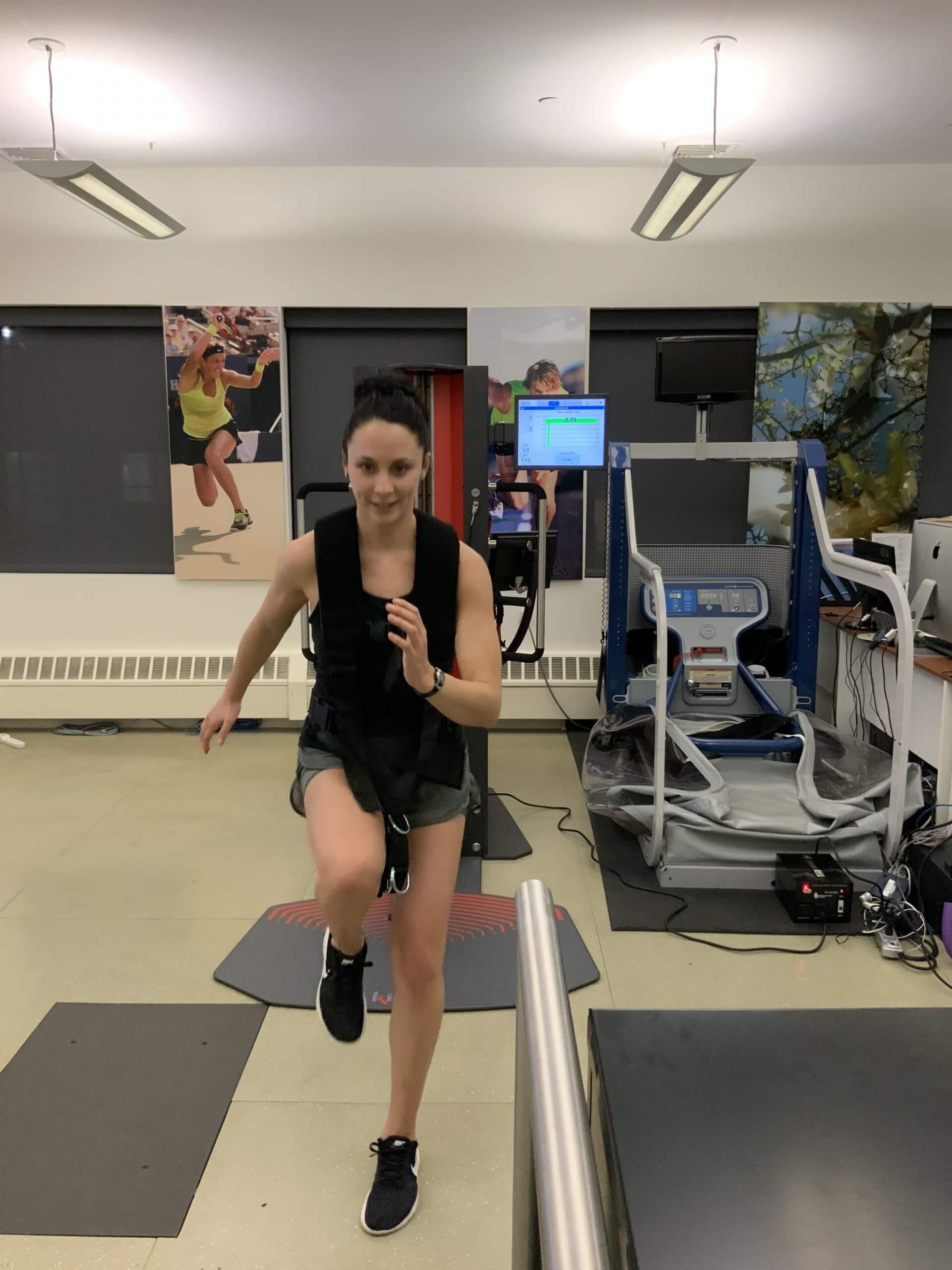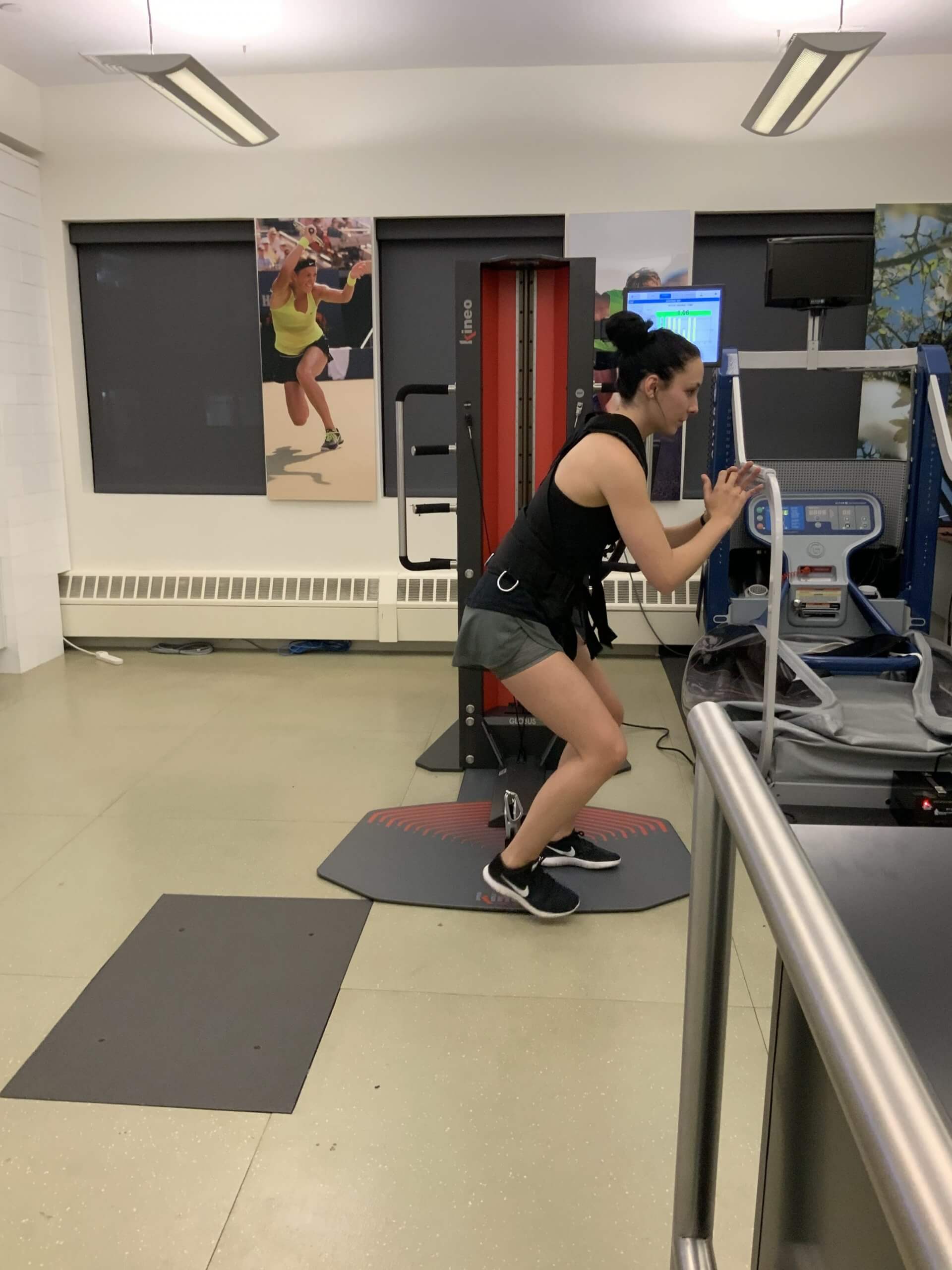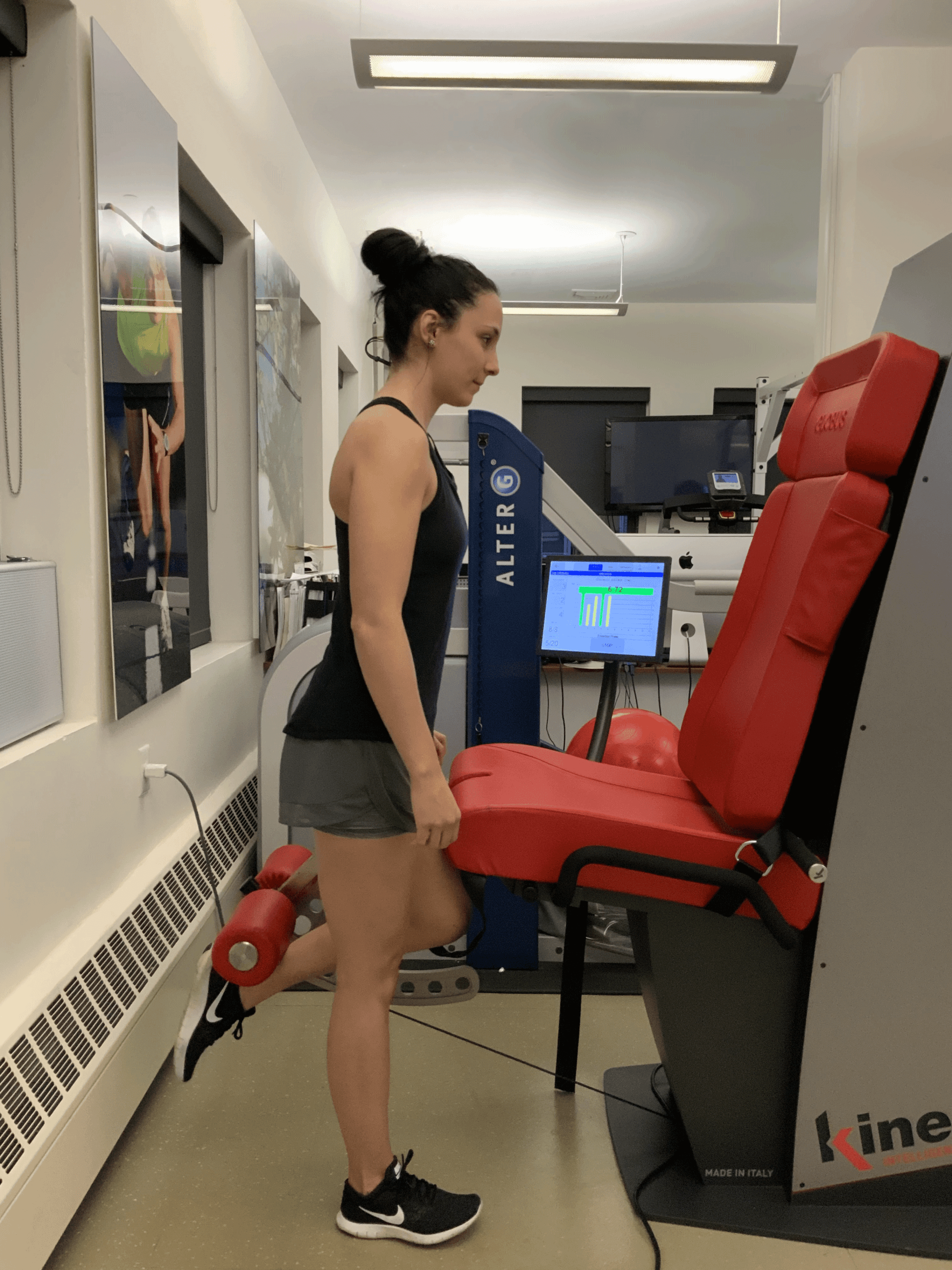Balance Training to Improve Running (Runners Corner)
Although balance isn’t what comes to mind when you think about running it plays a key role when making sure your body is in proper alignment and stays there. Balance training helps runners to train their bodies to distribute their body weight with each forward lunge. Runners may spring forward by digging their heels into the track, which is a rigid surface that will not cushion each step and could cause injuries. A balanced stride will prevent injuries. Exercises for distributing the body weight are similar to shifting the load of a truck trailer, which has adjustment points for changing the load distribution over the axles.
The New York Dynamic Neuromuscular Rehabilitation (NYDNR) is the industry leader and uses a Computer Assisted Rehabilitation Environment (C.A.R.E.N) to help runners. The techniques with C.A.R.E.N are the most advanced methods for improving proprioception and for conditioning with balance training. The NYDNR is the first clinic in the city of New York and in the United States to use these rehabilitation methods with treatments for the public, who are individuals who are not affiliated with a particular industry or government agency.
Balance
If a runner strikes down with a movement that is not parallel to the surface of the ground, then the foot could be twisted at an angle that will cause injuries. The feet are a platform for the body. If the foot strikes at an unsafe angle, then more weight than necessary has been applied to a joint because of uneven weight distribution. For example, if a car is supported by a jack stand that lifts the car above the elevation of the other three tires, then a different amount of weight is being supported by the jack stand than by each of the three tires.
Exercises
Exercises help to condition the muscles to respond to specific movements. Experienced runners usually have a stabilized pattern of movements. Theoretically, the body should adjust the muscular responses to repetitive movements after a prolonged period of time. The adaptive nature of the muscles should provide the most efficient use of the various muscles. However, not all movements will produce the most beneficial use of the muscles. For example, typists may experience carpal tunnel system from repetitive movements with the same muscles.
Body Weight
Body weight is an important factor for runners because runners need to move their body weight forward with each step. Therefore, a runner is carrying a load, which is a body weight and is similar to the weight of a truck load. Truckers adjust the weight of the loads by moving the points of weight distribution over the axles. In comparison, runners should try to evenly distribute their body weight on their feet. However, when a runner is running, the body weight could be solely supported by one foot during a single stride. The objective is to minimize the striking force from the body weight, which will prevent injuries.
Striking Forces
Runners do not need to pound the pavement in order to move forward. A graceful and gliding step can push a runner forward without pounding a heel into the track. The running shoes should allow the runners to freely move their feet, which will prevent rigid movements.
Reactive Neuromuscular Training on Kineo

























































